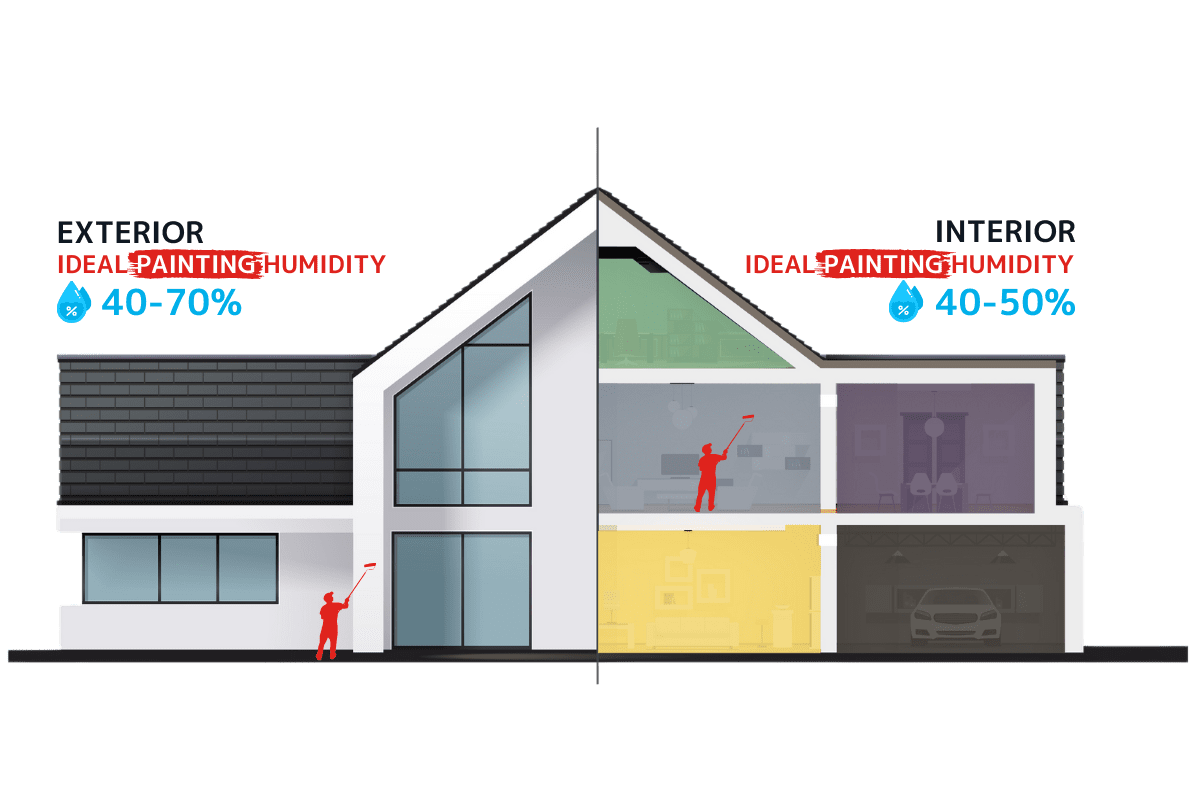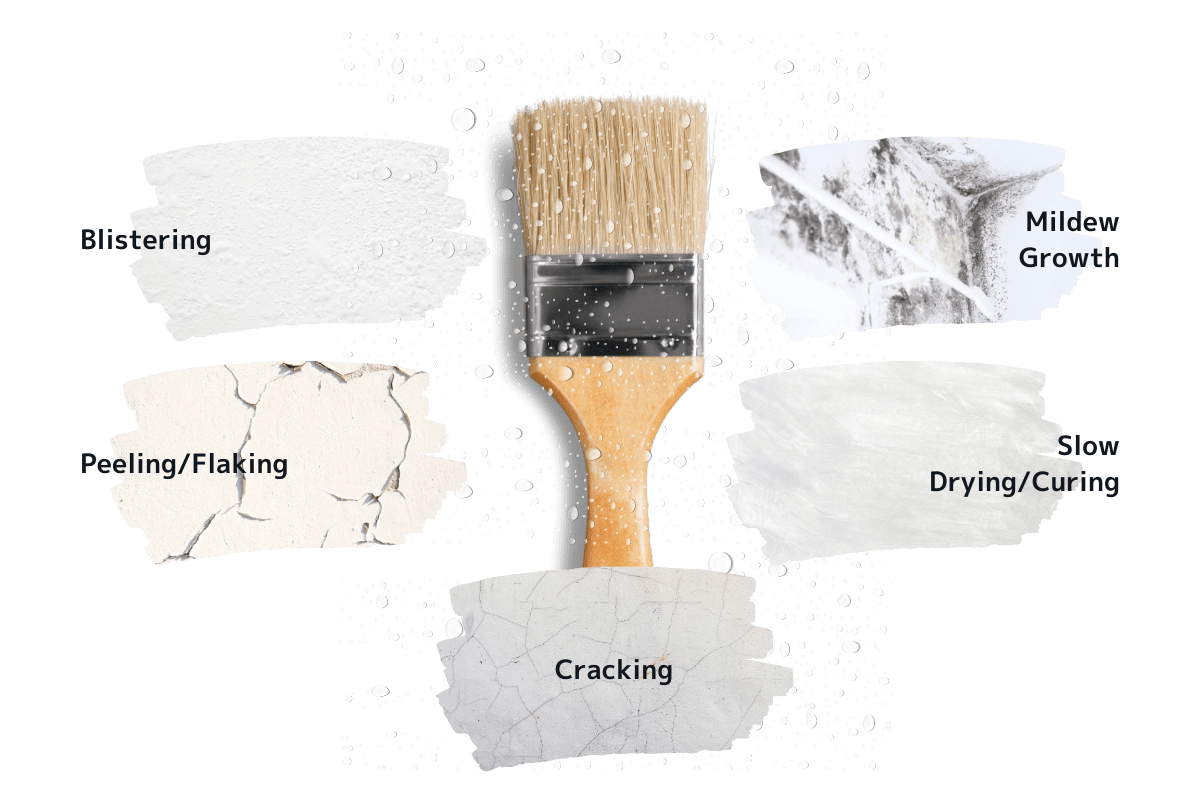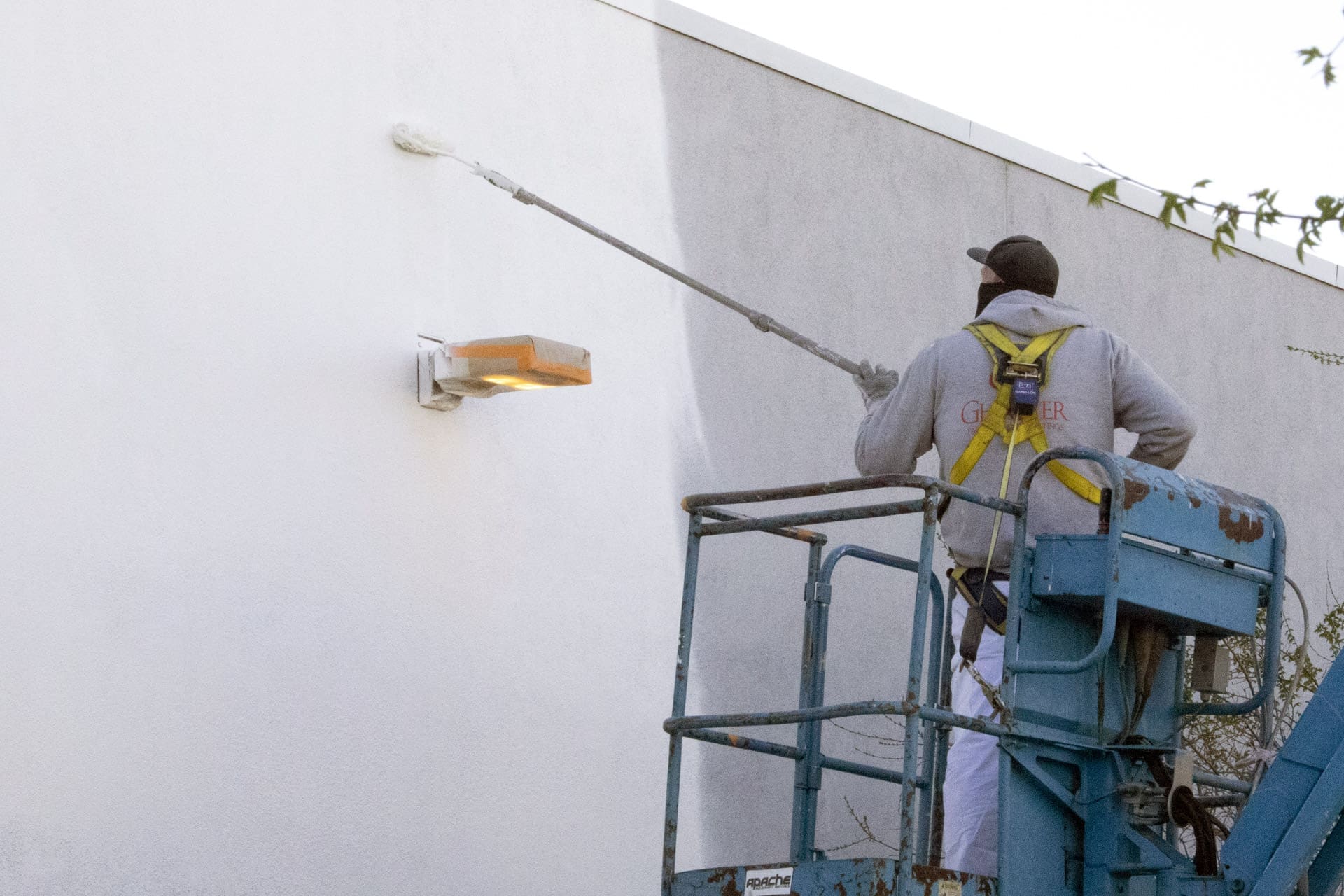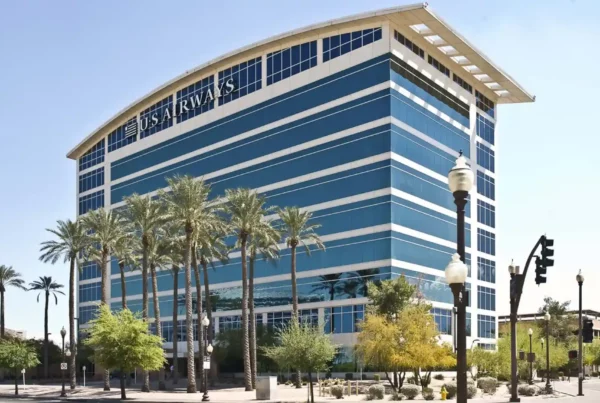In Arizona’s unique climate, the interplay between painting and humidity can quickly turn projects into nightmares. Excess moisture in the air prevents paint from drying and curing properly, hindering the evaporation process and leading to peeling, bubbling, and other unsightly issues. This becomes even more critical during our summer monsoon season when humidity levels can unexpectedly spike.
However, achieving a flawless, long-lasting paint job is possible with the right knowledge and strategies. This guide will equip you with the tools to navigate the challenges of painting in Arizona’s arid yet sometimes humid environment, including those sticky monsoon months, ensuring your investment stands the test of time. Learn how to choose the optimal time to paint, create ideal drying conditions, and select the best paint to withstand the elements.
The Science Behind Humidity and Paint
Painting is a chemical reaction influenced by humidity – the amount of moisture in the air. High humidity means the air is saturated with water vapor, slowing the evaporation of solvents in the paint. This delays drying and curing, impacting adhesion and the final finish.
For interior painting, aim for 40-50% relative humidity. For exterior projects, where conditions vary more, 40-70% is ideal. Temperature, airflow, and sunlight also play a role. High heat and humidity combined can lead to paint failures like blistering.
 Why the Monsoon Season is a Humidity Wild Card
Why the Monsoon Season is a Humidity Wild Card
While Arizona is known for its dry heat, the monsoon season (typically July through September) introduces a unique challenge: a sudden surge in humidity. This can wreak havoc on paint jobs if not properly managed. The higher moisture content in the air during this time can:
- Extend Drying Times: Paint will take longer to dry and cure, increasing the risk of dust and debris sticking to the surface.
- Encourage Mold and Mildew Growth: These fungi thrive in damp environments, so it’s crucial to use mildew-resistant paints and ensure proper ventilation during the monsoon season.
- Increase the Risk of Peeling and Blistering: Trapped moisture under the paint film is more likely during high humidity, leading to these common paint failures.
Common Painting Issues Caused by Humidity
When humidity isn’t managed during a paint job, a host of problems can arise. These issues are especially prevalent during the monsoon season:

- Blistering: Bubbles form under the paint film when moisture gets trapped beneath the surface. The added humidity of the monsoon season can exacerbate this issue.
- Peeling/Flaking: High humidity prevents the paint from adhering properly to the surface, causing it to peel or flake off. The fluctuating humidity of the monsoon season can make this even more likely.
- Cracking: As the paint dries, it shrinks. In high humidity, this shrinkage can occur unevenly, leading to cracks. Monsoon season’s high humidity can worsen this problem.
- Mildew Growth: Excess moisture creates the perfect environment for mildew, which manifests as black or gray spots on the paint surface. Monsoon season is a prime time for mildew to take hold.
- Slow Drying/Curing: High humidity extends drying and curing times, delaying project completion and leaving the paint vulnerable to damage. The humid monsoon air can significantly prolong this process.
Solutions for Successful Painting in Arizona
The complex relationship between humidity and painting means that even in a typically arid climate like Arizona, moisture can become a significant concern. Here’s how to ensure your painting projects thrive, even when the air is thick with moisture:
Paint Choice is Critical: Opt for paints specifically designed for high-humidity environments. Look for labels indicating mildew resistance or quick-drying formulas. Latex paints are generally a good choice for humid climates as they are water-based and tend to dry faster than oil-based paints.
Monitor humidity levels: Keep a close eye on the weather forecast and avoid painting during days with high humidity. Consider postponing outdoor projects until the monsoon season subsides.
Timing is Key: In Arizona, the time of day you paint can significantly impact the outcome. Proper weatherization service and planning can help mitigate potential issues. Avoid painting during peak humidity hours, usually early morning and late evening. Instead, aim for the late morning or early afternoon when the sun has had a chance to burn off some of the moisture.
Prepare the Surface Meticulously: A clean, dry surface is crucial for proper paint adhesion. Thoroughly remove any dirt, dust, or debris. If you’re painting indoors, a dehumidifier can help reduce moisture levels in the room. For exterior projects, ensure the surface is completely dry before applying any paint.
Mind the Temperature: Ideally, paint when temperatures are between 50°F and 85°F (10°C and 29°C). Avoid painting in extreme heat, as it can cause the paint to dry too quickly.
Ventilation is Vital: Proper airflow helps speed up drying time and prevents moisture buildup. Open windows and doors or use fans to circulate the air during and after painting. For larger projects, consider renting a professional-grade air mover.
Consider a Dehumidifier: If humidity levels are consistently high, using a dehumidifier can significantly improve drying times and reduce the risk of paint-related issues.
Pro Tip: Always consult with a local paint professional. They can provide expert advice on the best products and techniques for your specific project and Arizona’s unique climate.
Best Practices for Exterior Painting
When humidity is high, exterior painting requires extra attention. Here’s how to conquer the elements:
- Moisture Meter: Use a moisture meter to check the surface before painting. This will ensure the surface is sufficiently dry for proper paint adhesion. If the reading is too high, consider postponing or using a dehumidifier to lower the moisture levels.
- Ventilation: Maximize airflow around the painting area to help the paint dry faster and reduce condensation. If possible, schedule your project for a time when the air is less stagnant or use fans to create a breeze.
- Thin Coats: Apply multiple thin coats of paint instead of one thick coat. This allows each layer to dry more thoroughly and reduces the risk of trapping moisture underneath the paint, which can lead to blistering.
Optimizing Interior Painting Projects
Indoor humidity can be controlled more easily than outdoor conditions, but it still requires careful management for a flawless paint job:
- Dehumidifier or Air Conditioning: If the humidity inside your building is above the ideal range (40-50%), use a dehumidifier or air conditioner to lower it before and during painting. This will help the paint dry properly and prevent issues like mildew growth.
- Strategic Scheduling: Avoid painting during periods of high humidity, such as after a rainstorm or when using appliances that generate a lot of moisture (like dishwashers or showers). Check the weather forecast and plan your project for a time when the humidity is expected to be lower.
Your Paint’s Success Starts with Understanding Humidity
Painting in high humidity presents unique challenges, but achieving a flawless finish is possible with the right knowledge and expertise. For businesses in Phoenix, understanding how humidity affects paint is crucial for successful projects.
Partnering with experienced painting contractors in Phoenix who are familiar with the local climate is essential. They understand the impact of humidity on various paint types and surfaces, ensuring your project looks its best for years to come.
Don’t let Arizona’s humidity compromise your vision. Request a bid from a reputable painting contractor today and discover how their expertise can transform your space, regardless of the weather.






